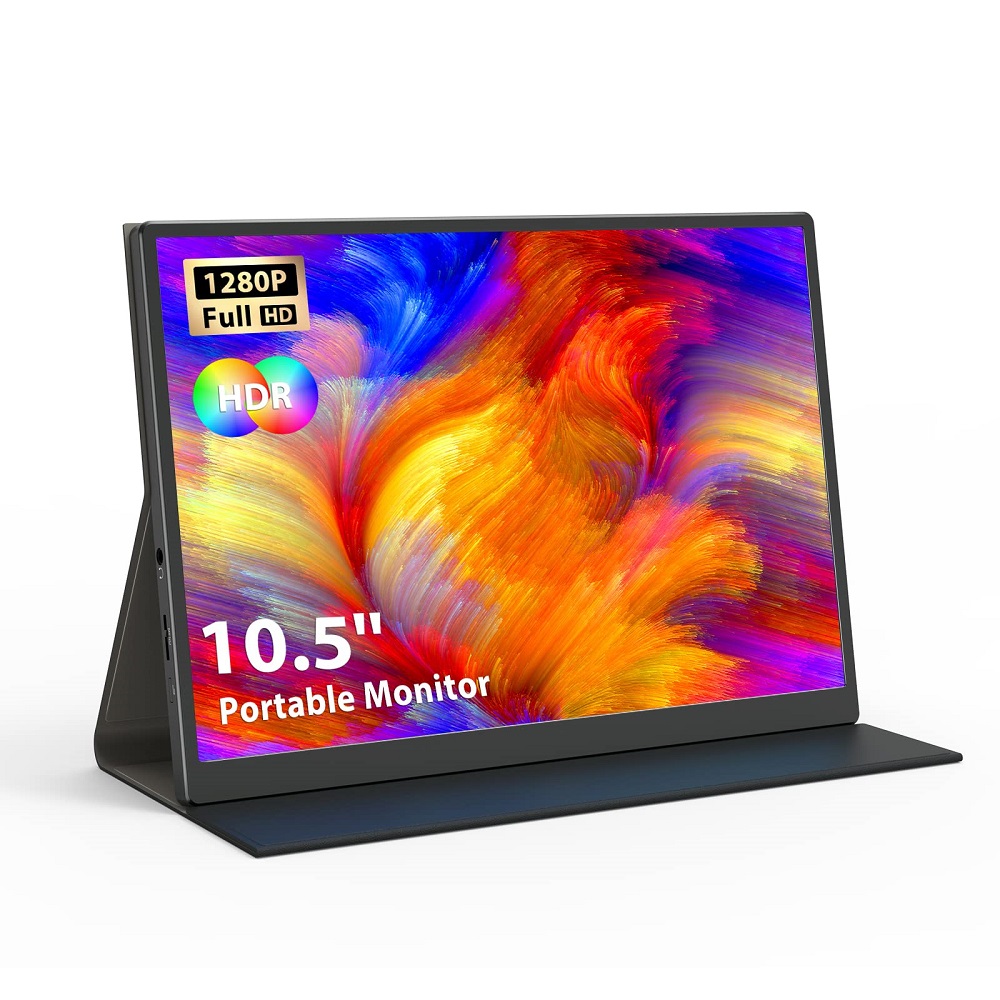Selecting the perfect small monitors for your needs can greatly enhance your workspace, entertainment setup, or gaming experience. Small monitors are versatile and can serve various purposes, from professional graphic design to casual media consumption. With the vast array of options available on the market, finding the right monitor may seem overwhelming. This guide aims to simplify the decision-making process by providing essential criteria, key features to look for, and tips for ensuring you make the best choice for your specific requirements.
Assessing Your Needs
Identify the Primary Use
Before diving into the features and specifications of small monitors, it is essential to determine the primary use. Understanding the main purpose of the monitor will help narrow down your options. Common uses for monitors include professional work, gaming, media consumption, and casual browsing.
For example, if you’re a graphic designer or a photographer, you’ll want a monitor with high color accuracy and resolution. On the other hand, if you plan to use the monitor primarily for gaming, refresh rates and response times will be more significant factors. By clearly identifying your needs, you can make a more informed choice, ensuring that the monitor you select aligns with your specific requirements.
Consider the Available Space
Another crucial factor to consider when choosing a small monitor is the available space on your desk or workspace. Small monitors come in various sizes, typically ranging from 21 to 27 inches. However, even within this category, there can be variations in depth, height, and width. It’s important to measure your space before making a purchase to ensure that the monitor will fit comfortably in your workspace.
Additionally, think about how the monitor will be positioned. Will it be used on a desk? Will you need any stands or adjustable mounts? Evaluating the available space will help you visualize what size and shape of monitor will work best, contributing to a more organized setup.

Understanding Resolution and Display Quality
Resolution Needs
The resolution of a monitor is one of the most critical factors in determining picture quality. Common resolutions for small monitors include Full HD (1920 x 1080), Quad HD (2560 x 1440), and 4K (3840 x 2160). Higher resolutions provide sharper images and better clarity, while lower resolutions might suffice for everyday tasks such as browsing or emailing.
If your primary use involves graphic design, video editing, or gaming, investing in a monitor with higher resolution will help deliver better detail and color accuracy. For general office work and casual viewing, a Full HD resolution may be adequate. Understanding the purpose of your monitor will inform your decision about the necessary resolution.
Panel Technology
The type of panel technology used in a monitor can also greatly affect display quality. The three main types of display panels are In-Plane Switching (IPS), Twisted Nematic (TN), and Vertical Alignment (VA).
- IPS panels are known for their excellent color accuracy and wide viewing angles, making them ideal for professionals working in creative fields.
- TN panels, while generally offering faster response times, tend to have poorer color reproduction and narrower viewing angles, making them less suitable for design work but more appropriate for gaming.
- VA panels offer good contrast ratios and decent color reproduction, which can work well for general entertainment use.
Selecting the appropriate panel technology based on your needs will improve the overall visual experience.
Evaluating Connectivity Options
Types of Connections
When choosing a small monitor, it is crucial to assess the available connectivity options. Modern monitors typically come equipped with various inputs, including HDMI, DisplayPort, USB-C, and VGA. It is important to consider which devices you want to connect.
For example, most laptops and desktops will work seamlessly with HDMI and DisplayPort connections. If you plan to connect your phone or other devices, USB-C may be essential. It’s wise to check the ports on your existing devices prior to making a purchase to ensure compatibility.
Additional Features
In addition to standard video connections, consider the additional ports or features a monitor might offer. Some monitors include USB hubs that allow for easy connections to peripherals, such as keyboards and mice. Built-in speakers can also add convenience for casual use.
Additionally, some monitors may have features like adjustable stands or VESA mount compatibility. With VESA compatibility, users can mount the monitor on the wall or use an adjustable stand for better ergonomics. Evaluating these extra features can provide additional functionality that enhances your overall experience.

Refresh Rates and Response Times
Importance of Refresh Rates
Refresh rate is a vital aspect to consider, especially for gamers or those engaging in fast-paced activities, such as video editing. The refresh rate, measured in Hertz (Hz), indicates how many times the screen updates per second. Common refresh rates include 60Hz, 120Hz, and 144Hz.
A higher refresh rate results in smoother motion and can improve the overall visual experience, particularly in gaming and action movies. For gamers, a monitor with at least a 120Hz refresh rate is recommended for optimal gameplay. If you play competitive games, look for options with even higher refresh rates, such as 240Hz or more.
Response Times
Alongside refresh rates, response times also play a vital role in the monitor’s performance. Response time refers to how quickly a pixel can change from one color to another, typically measured in milliseconds (ms). Monitors with faster response times reduce motion blur and ghosting in fast-moving scenes, which is particularly important for gaming and sports viewing.
For gaming monitors, a response time of 1ms to 5ms is generally ideal. However, a response time of 5ms to 10ms may suffice for general use, such as web browsing and office work. Understanding both refresh rates and response times will help you ensure the monitor suits your specific activities.
Design and Ergonomics
Aesthetic Appeal
The design of the monitor also impacts your overall satisfaction. Small monitors come in various designs, from minimalistic to modern and sleek options. Aesthetics matter, especially if the monitor will be part of a carefully curated workspace or home theater setup.
When choosing a monitor, consider the bezel size (the frame around the screen) and the overall thickness. Slim bezels can make a monitor look more modern and professional, while thicker bezels may not blend well with minimalist designs. Choosing a monitor that complements your existing decor will enhance the look of your space.
Ergonomics for Comfort
Comfort is crucial, especially if you plan to use the monitor for extended periods. Ergonomic features play an important role in ensuring proper posture and minimizing strain on your neck and eyes. Look for monitors that offer height adjustments, tilt functionality, and swivel capabilities to help you find the most comfortable position.
Additionally, consider an eye care feature, such as blue light filtering, to reduce fatigue during long sessions. Monitors with flicker-free technology can also help minimize eye strain. By prioritizing ergonomics, you will enhance your comfort and productivity during use.
Reading Reviews and Recommendations
Importance of Research
With numerous brands and models available, it is vital to conduct thorough research before making a purchase decision. Reading reviews from both experts and average users offers valuable insights into the performance and quality of various monitors. These reviews help gauge how well the monitor performs in real-world situations, beyond specifications on the box.
Consider looking for reviews on trusted tech websites, forums, and customer feedback on retail platforms. Many experts provide in-depth evaluations that cover specific use cases, while user reviews can give insight into long-term reliability and satisfaction.
Recommendations from Professionals
In addition to user reviews, seeking recommendations from professionals in relevant fields can further inform your decision. Graphic designers or gamers may have valuable input on which monitors perform best for their specific needs.
When possible, visit local retailers to test monitors in person. Seeing the displays will help you evaluate their picture quality, colors, and features. Engaging with knowledgeable sales staff can provide additional insights on which monitors might work best for your requirements.

Making Your Final Decision
Weighing Pros and Cons
After thorough research, make a list of potential monitors that meet your criteria. Consider the pros and cons of each option, reflecting on important aspects such as cost, features, and user feedback.
If any monitor stands out as a clear favorite, consider if it fits well within your budget. Monitors can range significantly in price, so be realistic about how much you are willing to spend. Looking for monitors that offer the best value for your budget is always advisable.
Final Thoughts and Purchase
Once you’ve narrowed down your options, feel confident in your choice. A well-chosen small monitor can enhance your work or leisure activities, providing a fun and enjoyable experience. Take your time, and don’t be afraid to ask for assistance if needed.
When you’ve made a decision, ensure you purchase from a reputable retailer that offers a good return policy, in case the monitor does not meet your expectations. With careful consideration, you will end up with a small monitor that perfectly fits your needs, enhancing your productivity, entertainment, or gaming experience!
In conclusion, selecting the right small monitor involves assessing your needs, understanding display characteristics, evaluating connectivity options, and considering design and ergonomics. With the right knowledge and resources, you can find the perfect small monitor to elevate your workspace or entertainment setup. Happy monitor hunting!